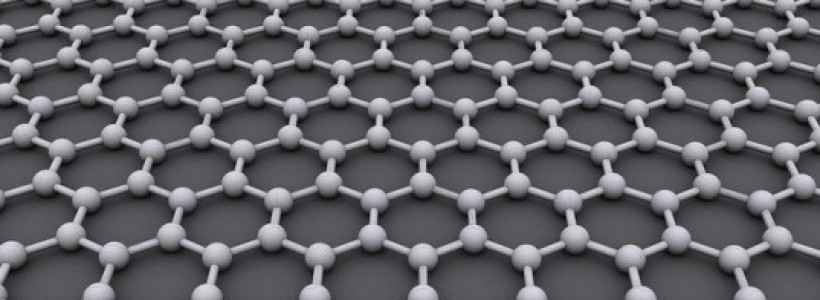Carbyne : World's Strongest Material
08/09/2013 15:04
A new research paper published on Arxiv describes in detail the properties of Carbyne, a supermaterial that is stronger than graphene and diamond, and that can be synthesized and stabilized at room temperature.
Carbyne is stiffer than anything that scientists have seen before, and it could potentially have a wide variety of applications in nanomechanical systems and electromechanical devices.
The paper, authored by Mingjie Liu, Vasilii I. Artyukhov, Hoonkyung Lee, Fangbo Xu, and Boris I. Yakobson from Rice University, shows the supermaterial as a chain of carbon atoms linked by alternative triple and single bonds or by consecutive double bonds. They have calculated and written down Carbyne’s physical and chemical properties – mechanical response to tension, bending, torsion deformations and atomic structure.
The paper, authored by Mingjie Liu, Vasilii I. Artyukhov, Hoonkyung Lee, Fangbo Xu, and Boris I. Yakobson from Rice University, shows the supermaterial as a chain of carbon atoms linked by alternative triple and single bonds or by consecutive double bonds. They have calculated and written down Carbyne’s physical and chemical properties – mechanical response to tension, bending, torsion deformations and atomic structure.
Carbyne under tension. (a) DFT calculations of energy as a function of strain ɛ. The electronic density of carbyne (polyyne) (b) in equilibrium and (c) under tension shows a more pronounced bond alternation in strained carbyne. (d) Bond length alternation and (e) band gap increase as a function of strain.
The research show that, in order to break a single atomic chain within the material’s molecular structure, a force of approximately 10 nN (nanonewtons)- a strength which surpasses that of any other known material. It’s torsional stiffness can be zero but can be ‘switched on’ by appropriate functional groups at the ends, according to the paper.
Carbyne could have an impressively wide application. Carbyne and Carbyne-based nano-structures could revolutionize nanotechnology and could be used in nanomechnical systems (nanocoatings, composites, nanotubes, etc) and opto-electromechanical devices (microlenses, sensors) as an incredibly strong and lightweight material.
Of special interest in the new paper on carbyne is that research by the Rice team indicates just how strong and stiff is this supermaterial. They were able to calculate its properties. In presenting a summary and conclusions of their research, the authors said that they were able to create a comprehensive portrait of carbyne. Some key points are as follows. It has an extreme tensile stiffness, stiffer by a factor of two than graphene and carbon nanotubes—and a specific strength surpassing that of any other known material. Its flexibility is between those of typical polymers and double-stranded DNA, they continued, with a persistence length of ~14 nm.
A combination of unusual mechanical and electronic properties, they said, is of great interest for applications in nanomechanical systems, opto-/electromechanical devices, strong and light materials for mechanical applications, or as high–specific-area energy storage matrices.
Their research was supported by the Robert Welch Foundation, a source of funding for chemistry research, and the Department of Energ
Carbyne could have an impressively wide application. Carbyne and Carbyne-based nano-structures could revolutionize nanotechnology and could be used in nanomechnical systems (nanocoatings, composites, nanotubes, etc) and opto-electromechanical devices (microlenses, sensors) as an incredibly strong and lightweight material.
Of special interest in the new paper on carbyne is that research by the Rice team indicates just how strong and stiff is this supermaterial. They were able to calculate its properties. In presenting a summary and conclusions of their research, the authors said that they were able to create a comprehensive portrait of carbyne. Some key points are as follows. It has an extreme tensile stiffness, stiffer by a factor of two than graphene and carbon nanotubes—and a specific strength surpassing that of any other known material. Its flexibility is between those of typical polymers and double-stranded DNA, they continued, with a persistence length of ~14 nm.
A combination of unusual mechanical and electronic properties, they said, is of great interest for applications in nanomechanical systems, opto-/electromechanical devices, strong and light materials for mechanical applications, or as high–specific-area energy storage matrices.
Their research was supported by the Robert Welch Foundation, a source of funding for chemistry research, and the Department of Energ


